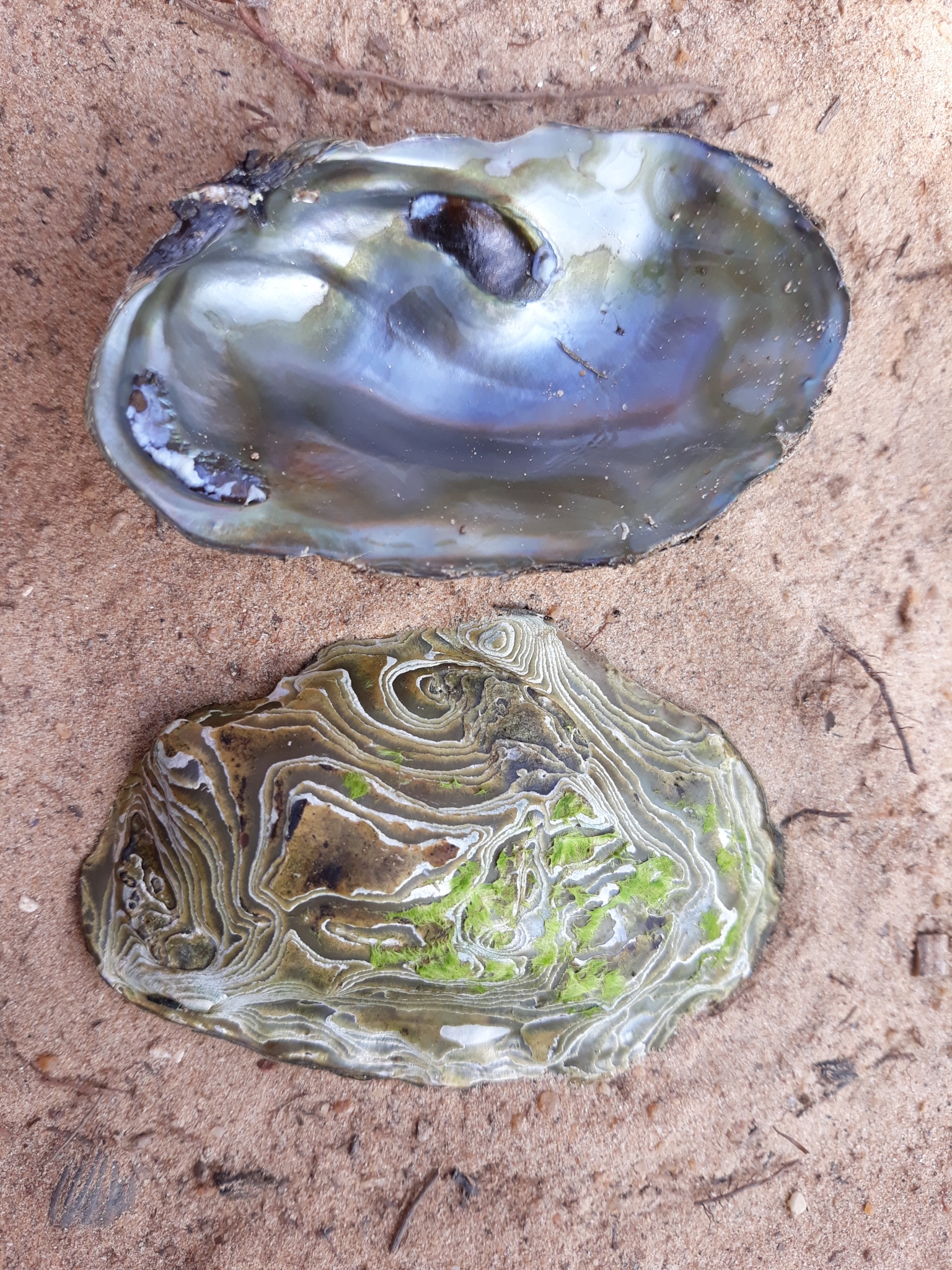by Piter Kehoma Boll
Oyster is a term used for a variety of unrelated bivalves. Although most oysters occur in the sea, there are oyster-like bivalves in freshwater environments. One of these freshwater oysters is Etheria elliptica, known as the African Freshwater Oyster.
As its common name implies, the African Freshwater Oyster is found in Africa, including the continent itself and Madagascar. It is, in fact, the only freshwater oyster in Africa and the sole species in the genus Etheria. It is spread across most of the largest river basins in Africa, including those of the Nile, Niger, Volta and Congo rivers, and Madagascar.

The external appearance of the African freshwater oyster is not among the prettiest. Being a somewhat oval-shaped bivalve, this species starts its life with two shells of identical size and shape, which is a typical characteristic of bivalves in the subclass Palaeoheterodonta. However, the African freshwater oyster lies on hard substrates with one of the shells and this one starts to encrust, cement onto the substrate, becoming strongly attached to it and causing the animal do become sessile and asymmetrical. The surface of the shell also becomes very eroded, worn out, in a very short time, which gives it that classical irregular look that we see in the true marine oysters. This is, perhaps, why they are called oysters as well.

While the outside is kind of ugly, the inner surface of the African freshwater oyster usually has that beautiful iridescent aspect that most mollusk shells have, which is caused by the presence of nacre or mother of pearl.
Like most bivalves, the African freshwater oyster is mainly a dioecious species, with male and female individuals. However, hermaphrodites are not that rare and seem to have completely functional gonads. Details of their reproduction are not very well known yet, apparently.
An edible species, the African freshwater oyster is an important food source for many human populations across Africa, sometimes being the main protein source and often the main income source for many families. The oysters are often harvested by women during low water levels when the oyster colonies become exposed above the water surface. Tools such as hoes and hammers are used to break them free from the substrate. While this subsistence exploitation is essential for many people, the populations are suffering from overexploitation in many areas. In Madagascar, for example, the populations were so heavily harvested that the species is almost extinct there, and evidence points out that other places are heading toward the same disaster.

Despite being considered a single species at the moment, some preliminary molecular results indicated the existence of at least three different species in the Congo Basin alone. This suggests that more isolated populations, in different river basins, may actually constitute distinct species as well. Thus, some may already have become extinct without our knowledge, such as the heavily depleted populations in Madagascar.
– – –
More Bivalvians:
Friday Fellow: Brown Mussel (on 17 November 2017)
Friday Fellow: Giant Clam (on 14 September 2018)
Friday Fellow: Asian Clam (on 14 February 2020)
Friday Fellow: Giant Thorny Oyster (on 30 October 2020)
– – –
– – –
References:
Akélé, G. D., Agadjihouèdé, H., Mensah, G. A., & Lalèyè, P. A. (2015). Population dynamics of freshwater oyster Etheria elliptica (Bivalvia: Etheriidae) in the Pendjari River (Benin-Western Africa). Knowledge and Management of Aquatic Ecosystems, (416), 06. https://www.kmae-journal.org/articles/kmae/abs/2015/01/kmae140100/kmae140100.html
Ampofo-Yeboah, A., & Owusu-Frimpong, M. (2014). The Fishery of the Freshwater Oyster Etheria Elliptica (Etheriidae) in Northern Ghana: Its Distribution and Economic Importance. Journal of Agriculture and Sustainability, 5(2). https://www.infinitypress.info/index.php/jas/article/view/774
Ampofo-Yeboah, A., Owusu-Frimpong, M., & Yankson, K. (2009). Gonad development in the freshwater oyster Etheria elliptica (Bivalvia: Etheriidae) in northern Ghana. African Journal of Aquatic Science, 34(2), 195-200. https://doi.org/10.2989/AJAS.2009.34.2.11.898
Elderkin, C. L., Clewing, C., Wembo Ndeo, O., & Albrecht, C. (2016). Molecular phylogeny and DNA barcoding confirm cryptic species in the African freshwater oyster Etheria elliptica Lamarck, 1807 (Bivalvia: Etheriidae). Biological Journal of the Linnean Society, 118(2), 369-381. https://doi.org/10.1111/bij.12734
– – –
* This work is licensed under a Creative Commons Attribution-NonCommercial-ShareAlike 4.0 International License.
This work is licensed under a Creative Commons Attribution-NonCommercial-ShareAlike 4.0 International License.
** This work is licensed under a Creative Commons Attribution-NonCommercial 4.0 International License.
This work is licensed under a Creative Commons Attribution-NonCommercial 4.0 International License.
